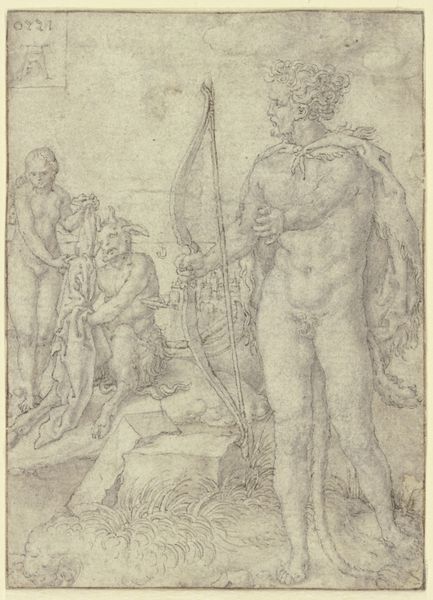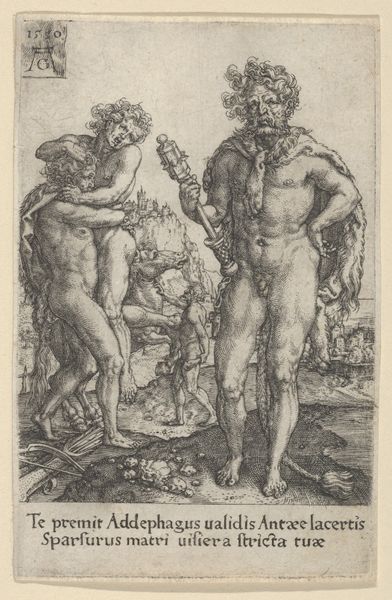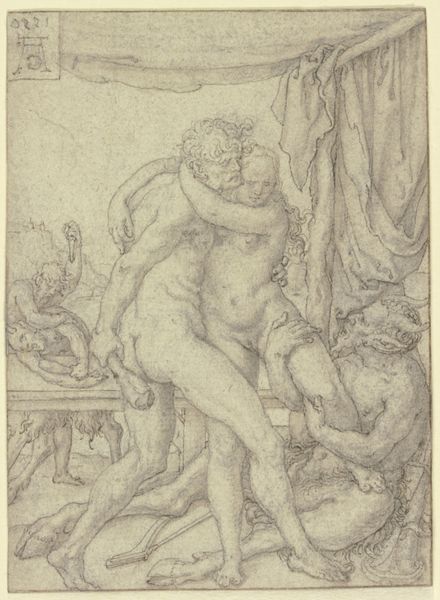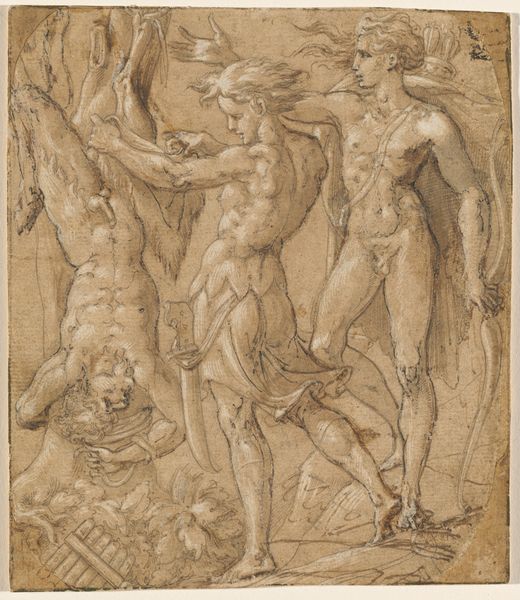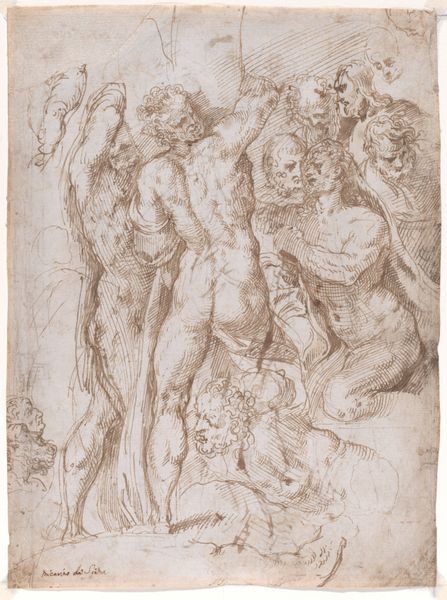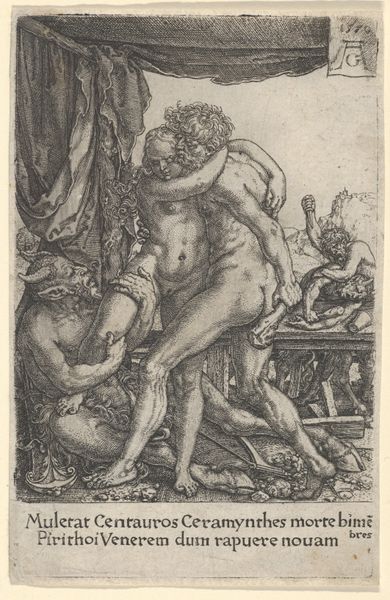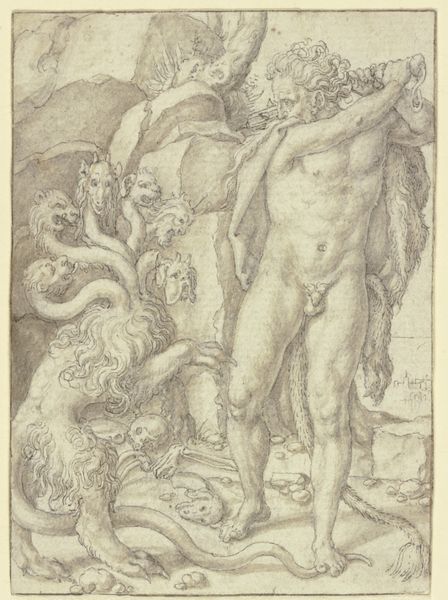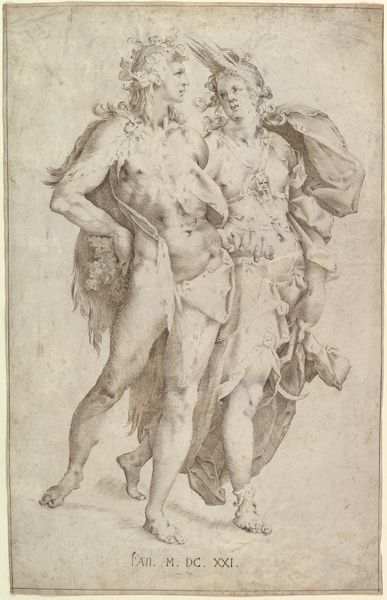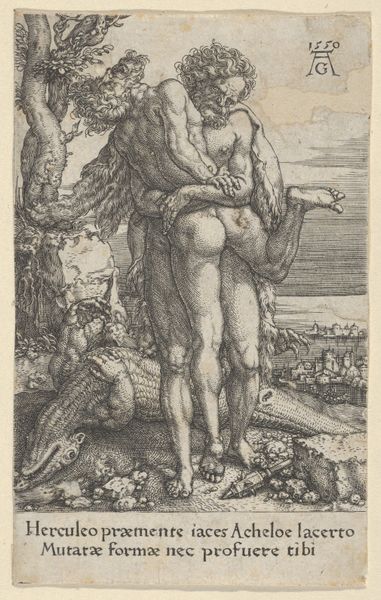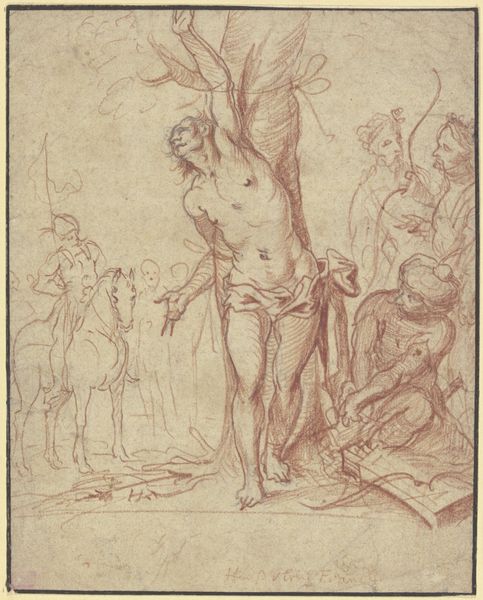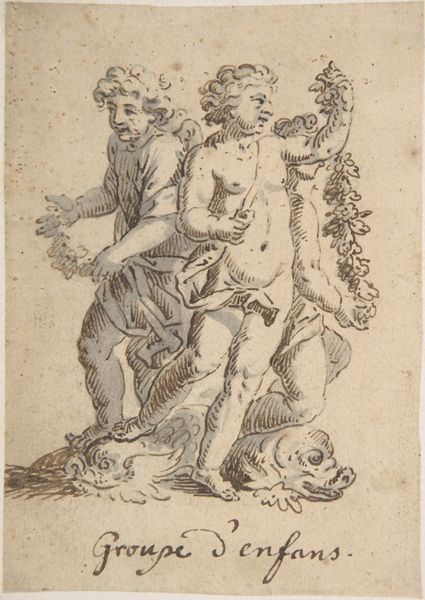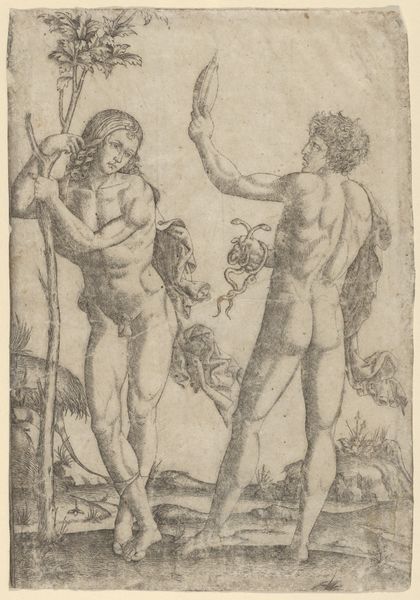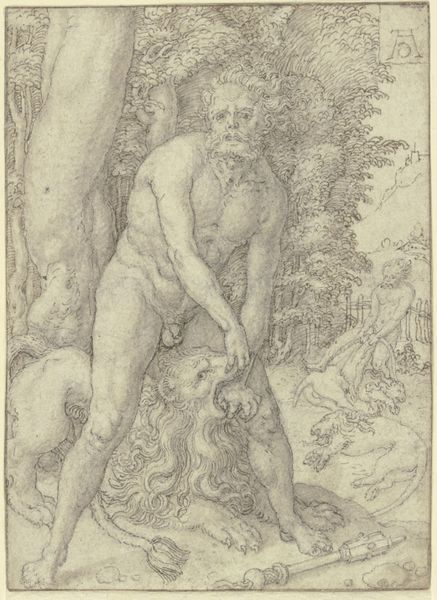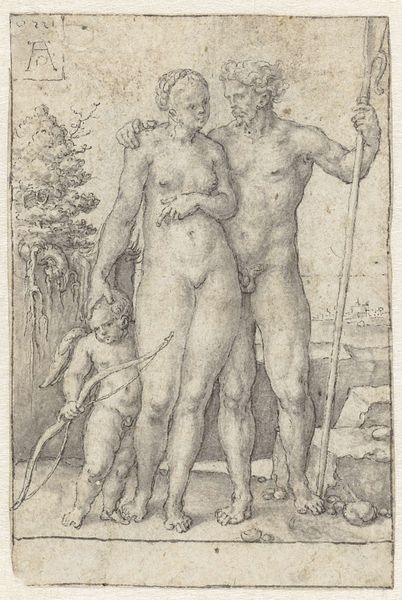
Herkules als Triumphator; Herkules und Antäus; Herkules bändigt die Rosse des Diomedes 1550
0:00
0:00
drawing, ink, pencil, chalk
#
pencil drawn
#
drawing
#
pencil sketch
#
figuration
#
11_renaissance
#
ink
#
pencil drawing
#
pencil
#
chalk
#
history-painting
#
academic-art
#
nude
Copyright: Public Domain
Editor: This drawing, titled "Hercules as Triumphator; Hercules and Antaeus; Hercules taming the horses of Diomedes," dates to 1550 and is by Heinrich Aldegrever. It’s rendered in pencil, chalk, and ink. I’m struck by the raw quality of the materials – you can really see the artist's hand at work. What does this piece say to you? Curator: Looking at the materials here – chalk, pencil, ink – they were relatively accessible, suggesting this work was perhaps less about aristocratic patronage and more about the artist's own exploration. Aldegrever, linked to the German Peasant's War, uses the figure of Hercules to explore notions of labor, strength, and maybe even revolt. Notice how the textures are created? Editor: Yes, there's a real roughness. So you're saying the choice of materials reflects the social and political climate? Curator: Precisely. Academic art, certainly later, often aimed to conceal the labor in creation. Here, it’s foregrounded. The “nude” theme then becomes less about idealized form and more about the physical toll of labor represented through the heroic figure. Editor: That makes a lot of sense. The materiality really emphasizes the physicality of Hercules's tasks. Curator: Consider how drawings like these, reproducible and portable, circulated within artisan workshops. The figure of Hercules would have served not just as an artistic model but as a symbol of strength relevant to their own manual work. Do you think Aldegrever’s choice of this particular set of stories of Hercules matters in relation to the audience? Editor: Yes, that does shift my perspective on how this image was received in that time, I was previously only interpreting the drawing within the art historical canon, now the conversation makes me realise that the choice of Hercules references serves to bring a powerful myth to the social context. I hadn't considered that connection before. Curator: Exactly, paying attention to materials and the means of production allows us to read art as part of broader social and economic realities.
Comments
No comments
Be the first to comment and join the conversation on the ultimate creative platform.
